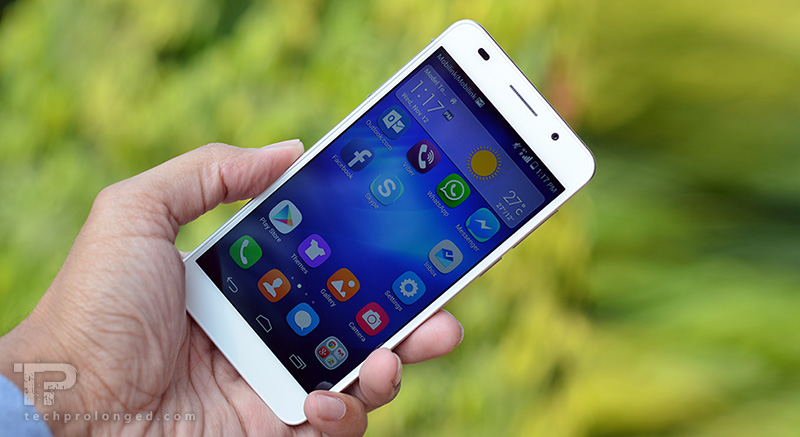Camera, Still Photos and Video
Camera Features
The primary camera in Honor 6 is equipped with Sony IMX214 Exmor RS of 13 megapixels sensor and 28 mm lens with aperture f/2.0. With features like that we can expect something good out of this camera. The stock camera app offers almost basic functionality with enough controlled user interface to give simple and clean look.
The camera functions include a set shooting modes you can choose from but I mostly used the “normal” mode where most users may have interest in “smart” and “HDR” modes. While there is no dedicated shutter button on the device for camera, there is an option in settings bind the volume buttons as a shutter key if you prefer.
Supported resolutions for still photos include 4160 x 3120 (13 MP) and 3264 x 2448 (8 MP) with the aspect ratio of 4:3 or 4160 x 2336 (9.7 MP) and 3264 x 1840 (6 MP) in 16:9 mode.
Now let’s have a look at some normal camera shots in bright sunlight as well as in indoors low light.
Outdoor shots with shadows and direct sunlight.
 |
 |
| 1/2402 sec | ISO 200 | 1/2028 sec | ISO 200 |
 |
 |
| 1/16017 sec | ISO 200 | 1/2826 sec | ISO 200 |
In the brightly lit conditions we found the Honor 6 camera handled the exposures well but it could not keep the image detail even on lower ISO sensitivity which we believe should not be like that considering Sony’s IMX214 image sensor. Instead blurry spots can be seen easily all over the image.
In low light conditions, the camera in Honor 6 can go down to 1/16th of the second but it can not be handled manually. Following shot was taken at the auto ISO and the system managed to take it at moderate ISO 640.

At first glimpse, I liked the image. Honor 6 actually managed to deliver good colors in this night scene. However the image still struggled with maintaining the detail while the focus really didn’t performed well and shows heavy blurriness along with the noise.
Indoor performance of the camera can be said as good as any other mid-range camera smartphone. Following shot was taken at ISO 100 in a enough lit room. It really produced managed colours. Due to closer subject we can even see that image detail is not bad but still the fuzziness can be seen all around.

Another shot indoor was taken in normal lit room with lower ISO sensitivity and can be remarked as below average (without flash on the left). I wanted to check the image detail and noise level with the lower ISO settings and it failed to deliver usable results. While on the other hand using flash on Honor 6 is just a not recommended as like many LED flash on the smartphones, it delivers same unimpressive light which starts to glow bright objects from the middle of the frame and slowly looses intensity of the light.
 |
 |
| 1/16 sec | ISO 200 | 1/16 sec | ISO 200 – Flash On |
Digital zoom in any camera has never worth mentioning but I tried to take a 4x zoom photo (without flash) of the horse and the fat man sitting on my side rack. In a small frame like below it actually looks good but if you look at a 100% image you will find a healthy loss of detail even from what we have talked above. As expected, JPEG artifacts can be easily identified. One more thing is still present which existed through out our test shots, the fuzziness.

In addition to regular still photography, the panorama mode in Huawei Honor 6 supports resolution of up to 38 megapixels of a well stitched photos.
Video Recording
Huawei Honor 6 offers to record videos at 1080p and 720p resolutions. In addition, you will have an option to record at lower resolutions as per your needs such as VGA and 176×144 for sharing purposes. Besides the powerful SoC, the features like HDR and Beauty Mode are only available for 720p recordings and several lower resolutions.
While the 1080p video has limited from extra video features, it is recorded with some standard elements which records at bit-rate of 24 Mbps. The 720p video we recorded was at bit-rate of 14 Mbps Advanced Video Codec profile [email protected]. The audio recording was not that impressive and so fading audio was easy to identify. The electronic image stabilization or the digital video stabilization is not kind of something usable. It decreases the video quality by reducing the image detail.
At first impression, we didn’t think that the HiSilicon SoC could refrain from performing well in the imaging department. Provided the high end chipset, we are actually not impressed by the camera performance at all in the Honor 6.



